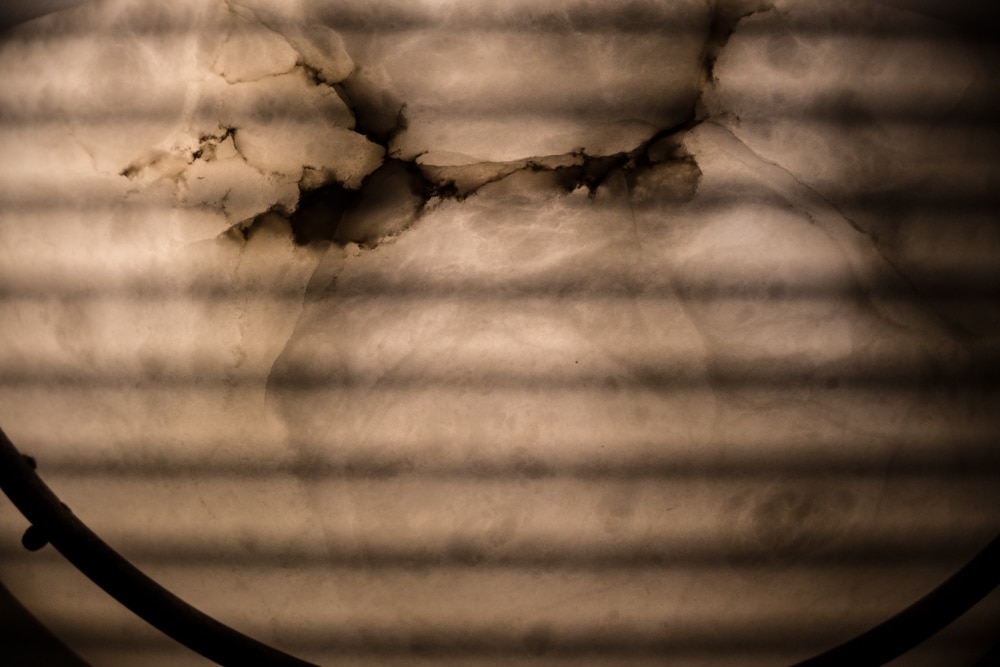This is one in a series of posts on the Nikon Z7. You should be able to find all the posts about that camera in the Category List on the right sidebar, below the Articles widget. There’s a drop-down menu there that you can use to get to all the posts in this series; just look for “Nikon Z6/7”.
In the past, I’ve measured the scan time of electronic shutters by photographing an analog oscilloscope trace of the output from a function generator. That was effective, but it took a while to set up and was a difficult experiment for some people to understand. So when I tested the scan time for the Z7 this morning, I used a quick-and-dirty method: photographing light from an LED that’s modulated at 120 Hz. I used single shot losslessly compressed raw at 1/2500 second shutter speed.
Because the light is modulated at 120 Hz, the stripes are 8.33 milliseconds apart. We can count them and see that there are a bit more than seven stripe intervals from the bottom to the top. So, the scan time is a bit over 60 milliseconds or about 1/16 second. This is the same as the D850 and Sony a7III.
The above test was done with the camera set for 14-bit raw. Marianne Oelund has measured the scan time for 12-bit raw at 1/20 second.

Jim, how does that sensor scan rate relative to other sensors besides the ones you mentioned?
Somehow 1/16 seems slow (to a layman). I would have thought faster.
It’s 1/50 on m43 E-M1 Mark II. The flash sync speed when doing pixel shift Hi-Res is 1/50 as well. And as expected it’s only 1/13 on A7RIII.
My my, counting fringes now? Considering a second (third?) career in optics, Jim?